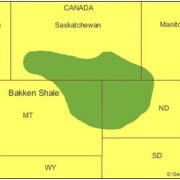My inbox was clogged with responses to my ?Golden Age? for the 2020?s piece, particularly my forecast that the US was moving towards complete energy independence. This will be the most important change to the global economy for the next 20 years. So I shall go into more depth.
The energy research house, Raymond James, put out an estimate this morning that domestic American oil production (USO) would rise from 5.6 million barrels a day to 9.1 million by 2015. That means its share of total consumption will leap from 28% to 46% of our total 20 million barrels a day habit. These are game changing numbers.
Names like the Eagle Ford, Haynesville, and the Bakken Shale, once obscure references on geological maps, are now a major force in the country?s energy picture. Ten years ago North Dakota was suffering from depopulation. Now, itinerate oil workers must brave -40 degree winter temperatures in their recreational vehicles pursuing their $150,000 a year jobs.
The value of this extra 3.5 million barrels/day works out to $121 billion a year at current prices (3.5 million X 365 X $95). That will drop America?s trade deficit by nearly 25% over the next three years, and almost wipe out our current account deficit. Needless to say, this is a hugely dollar positive development.
This 3.5 million barrels will also offset much of the growth in China?s oil demand for the next three years. Fewer oil exports to the US also vastly expand the standby production capacity of Saudi Arabia.
If you want proof of the impact this will have on the economy, look no further that the coal (KOL), which has been falling in a rising market. Power plant conversion from coal to natural gas (UNG) is accelerating at a dramatic pace. That leaves China as the remaining buyer, and their economy is slowing.
It all makes the current price of oil at $95 look a little rich. As with the last oil spike three years ago, this one is occurring in the face of a supply glut. Cushing, Oklahoma is awash in Texas tea, and the Strategic Petroleum Reserve stashed away in salt domes in Texas and Louisiana is at its maximum capacity of 727 barrels. It is concerns about war with Syria and Iran, fanned by elections in both countries that took prices to $112 in the fall.
My oil industry friends tell me this fear premium has added $30-$40 to the price of crude. This is why I have been advising readers to sell short oil price spikes to $110. The current run up isn?t going to take us to the $150 high that we saw in the last cycle. It is also why I am keeping oil companies with major onshore domestic assets, like Exxon Mobile (XOM) and Occidental Petroleum (OXY), in my long term model portfolio.









